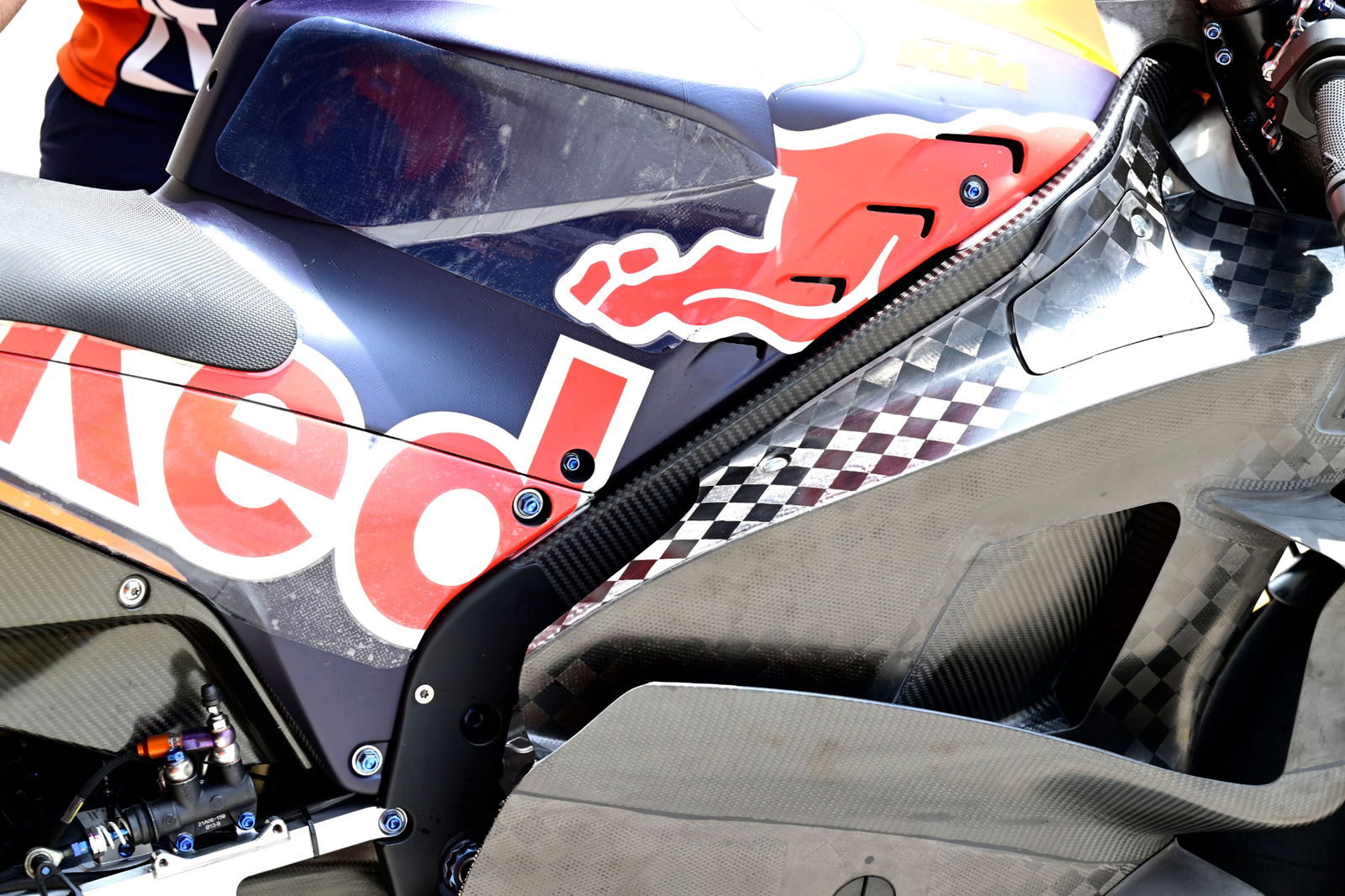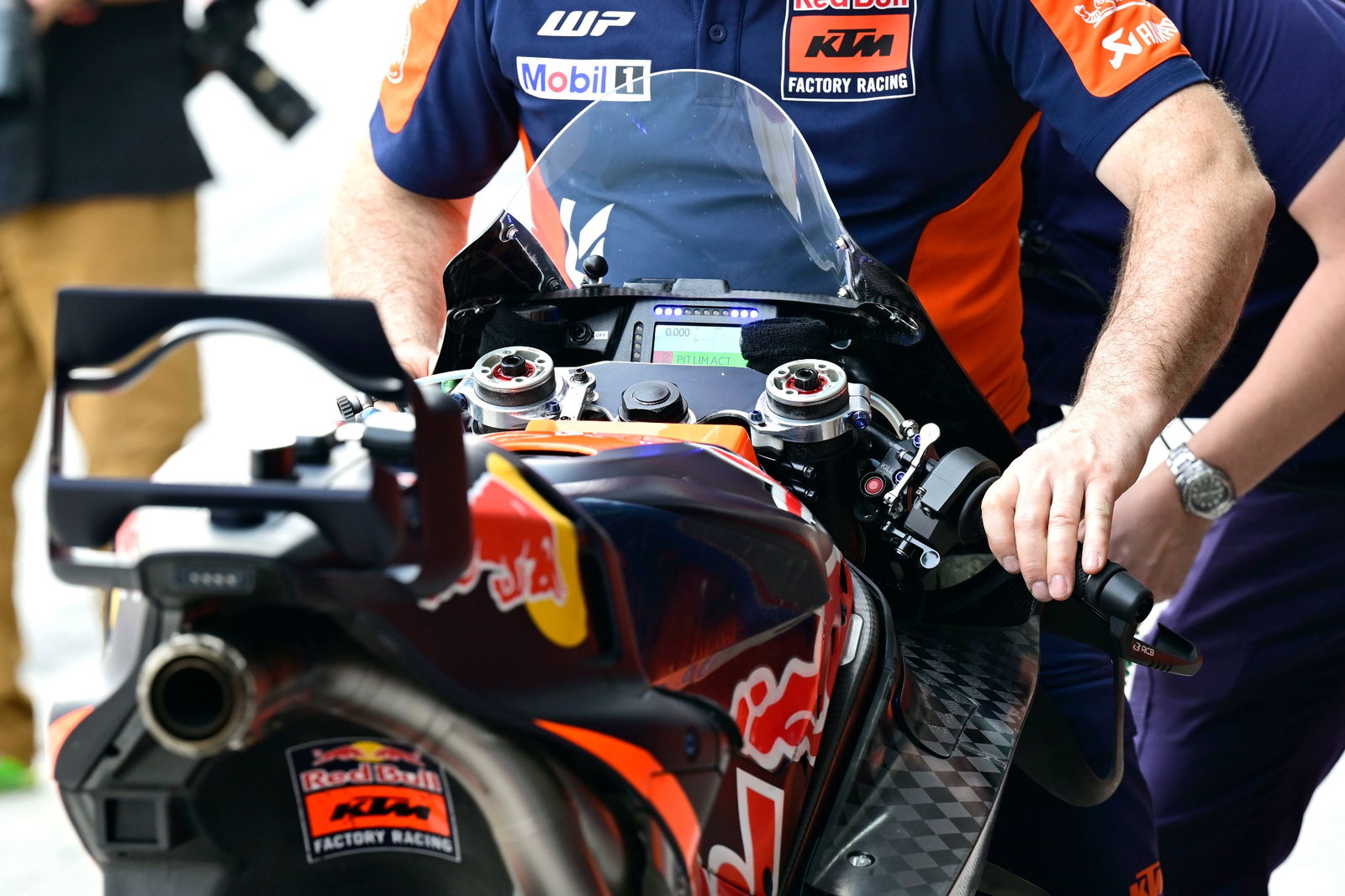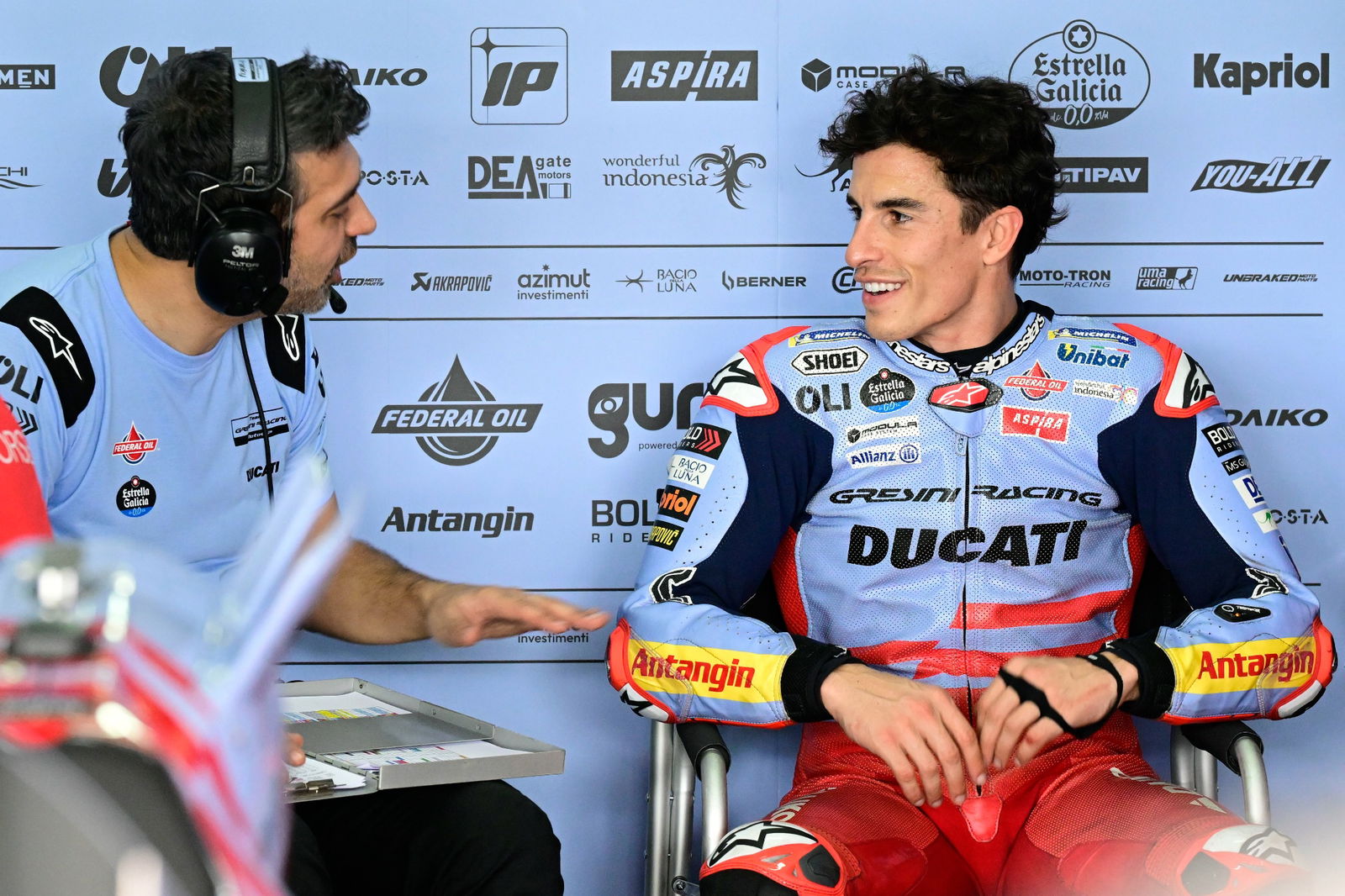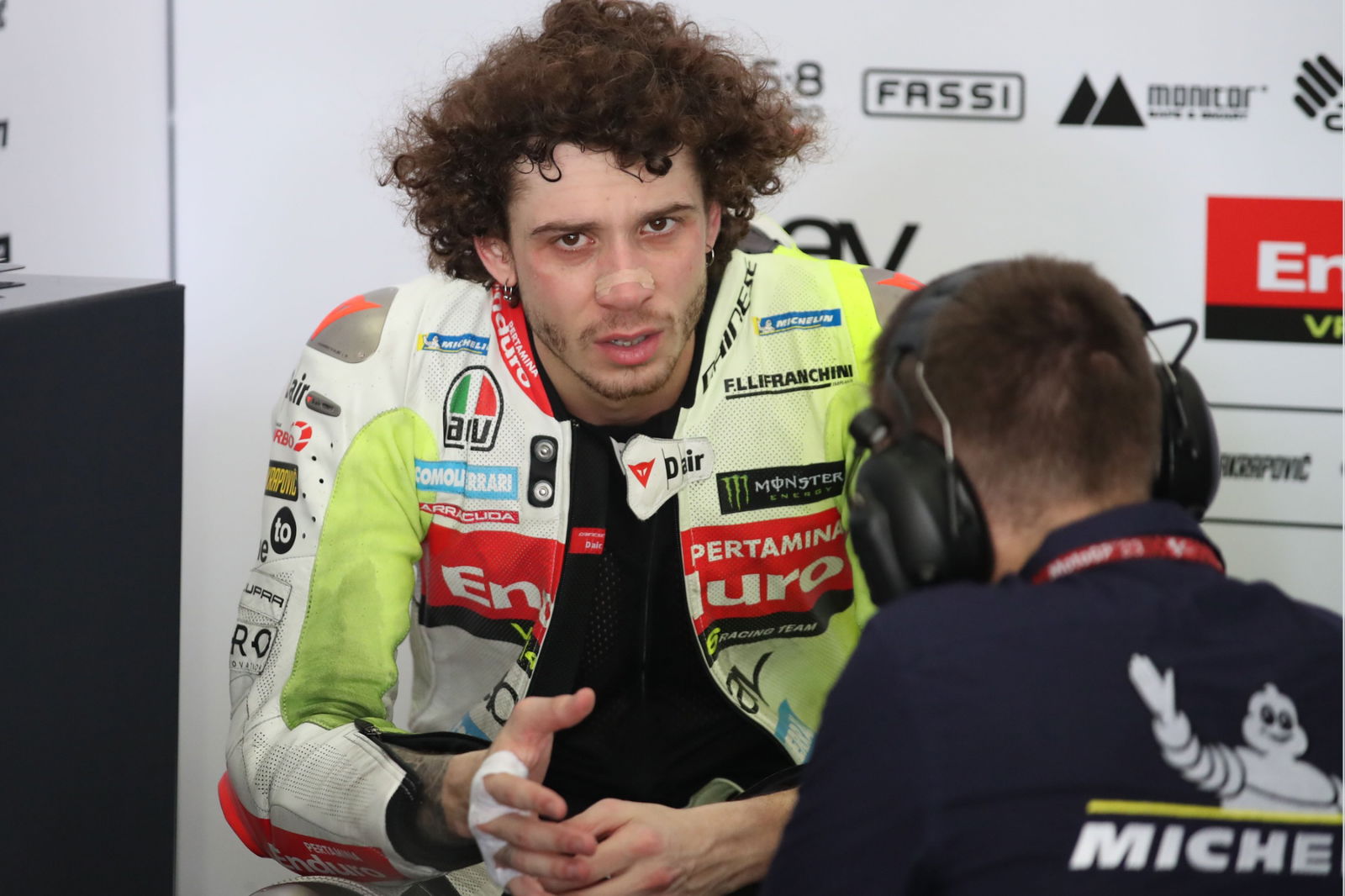Pit Beirer: MotoGP aero “getting wild, maybe we shouldn’t wait until 2027 to limit this stuff”
KTM boss suggests MotoGP should not wait until 2027 to clamp down on aerodynamics.

Collaboration with Red Bull Advanced Technologies, an offshoot of the title-winning F1 team, gave KTM ‘overnight’ access to a team of aerodynamic experts that would otherwise have taken years to assemble.
The fruits of that partnership soon became apparent on track, with the RC16 seen as one of the most aerodynamically advanced machines by the end of last season.
“We are more than happy and thankful that Red Bull opened the door for us, that we could get a team of experts on our side working for us overnight,” said KTM motorsports director Pit Beirer.
“Because if you need to develop that department one by one on your end, for sure it takes a while. And it’s also not so easy to find those experts.
“So we have access to a great team in Milton Keynes and I would say our aerodynamic package is covered. I feel we can keep up with everybody out there and also bring some new ‘candies’ to the track.”

Indeed, a raft of new aero parts - including an eye-catching front fender wing, more rear wing designs and a deep-cut fairing ‘shelf’ - appeared on the RC16 during pre-season testing at Sepang.
But KTM were far from alone in continuing to push the aero envelope, with Aprilia and Ducati also seeking to exploit every exposed surface in a new way, while Honda and Yamaha are making clear efforts to catch up.
“It's getting wild out there! If you saw what everybody brought to Sepang,” said Beirer.
“I feel we are somewhere where Formula One have been a couple of years ago where every small detail, lip, corner, radius on the bike is overthought: ‘How we can use it to help the bike on the aerodynamic side?’
“It's clear you don't need aerodynamics anymore just to have a fast bike on the straight.
"You need the aerodynamics to help keep the front down and get more traction in acceleration, then to be fast on the straights, but then also to help you slow down the bike and to turn the bike.
“So the aerodynamics play into the performance in every moment - acceleration, high speed, slowing down, turning.
“Of course, that's also why maybe the last two years the lap time steps became even more crazy than before, because that's a big factor in the lap time.”

Banning aerodynamics is seen as impossible but it’s now clear that the next set of technical regulations, from 2027, will see the size and scope of the aerodynamics limited.
But Beirer questions whether it shouldn't happen before then.
“It [aero] is quite exciting, but I think from the promoter side and regulations side, we need to be careful now not to go too far. So I think we need a limiting factor very soon. Maybe we should not even wait until ‘27 with limiting this this stuff…”
Beirer confirmed: “We [the five MotoGP manufacturers] all agreed from ‘27 forward that we need to limit the size of aerodynamic parts that you can use.
“We will not get rid of wings and stuff like that. So the modern bikes will continue to look as they do now.
“But the room where we can play [with aero] will be limited and that's a good direction, because the more [aero is] limited, the more you give the tools back to the rider to control things.”
The other major 2027 changes expected, aside from 100% non-fossil fuel, are to “get rid of right height devices, it's a clear request from our side. And reduce engine performance.”
Beirer admitted KTM had initially been against lowering the 1000cc engine size but has now been won over. 850cc is expected to be the future class capacity.
“It was not our wish, but after discussing and with our colleagues, we are also in favour now of reducing engine capacity just to make the bikes safe enough,” Beirer said.
“The [size of run-off] and everything is becoming a problem because the bikes are just getting too fast.
“So somehow we need to reduce speed and aerodynamics and ride height devices to come at least one step down from the situation where we are right now.”


